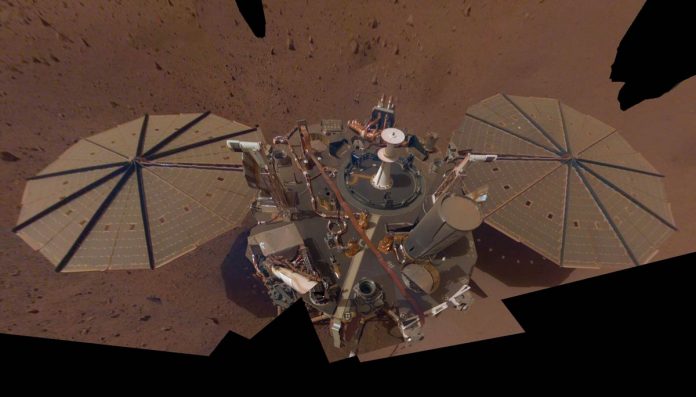NASA’s InSight lander is stable and sending data from Mars to Earth. It had gone to its safe mode because of a regional dust storm which reduced the sunlight reaching its solar panels. In its safe mode, the spacecraft is only carrying on its essential functions.
The team of scientists re-established contact with InSight on 10th January. They found that its power was steady and was not draining the lander’s batteries. Drained batteries can cause the end of NASA’s Opportunity rover.
Before the recent dust storm, dust had been accumulating on InSight’s solar panels. This has reduced the lander’s power supply. Scientists have used scoop on the lander’s robotic arm. They came up with an innovative way to reduce the dust on the panel. They have gained several boosts of energy in 2021. But all these activities will become difficult as energy decreases.
Dust storms have two effects on solar panels. Dust reduces sunlight filtering through the atmosphere. This can also accumulate on the panels. If the storm is going to leave an additional layer of dust on the solar panels needs to be determined later.
The recent dust storm was detected by Mars Colour Imager (MARCI) camera. This camera creates daily colour maps of the entire planet. Scientists used these maps to monitor dust storms. These maps can serve as an early warning system for spacecraft on Mar’s surface. Scientists received data indicating the regional storm is waning.
The dust storms have helped to clear solar panels over time. Like in Spirit and Opportunity Mars rover missions. InSight’s weather sensors also detected many passing whirlwinds. But they did not clear any dust.
Scientists are hopeful that next week they will be able to command the lander to exit safe mode. This will bring flexibility in operating the lander. It will also help in communication as it needs large amount of energy.
InSight landed on Mars in 2018. This was launched to study the inner structure of the planet such as the crust, mantle and core. The spacecraft has achieved its goal a year ago. Then NASA extended the mission for up to two more years.

